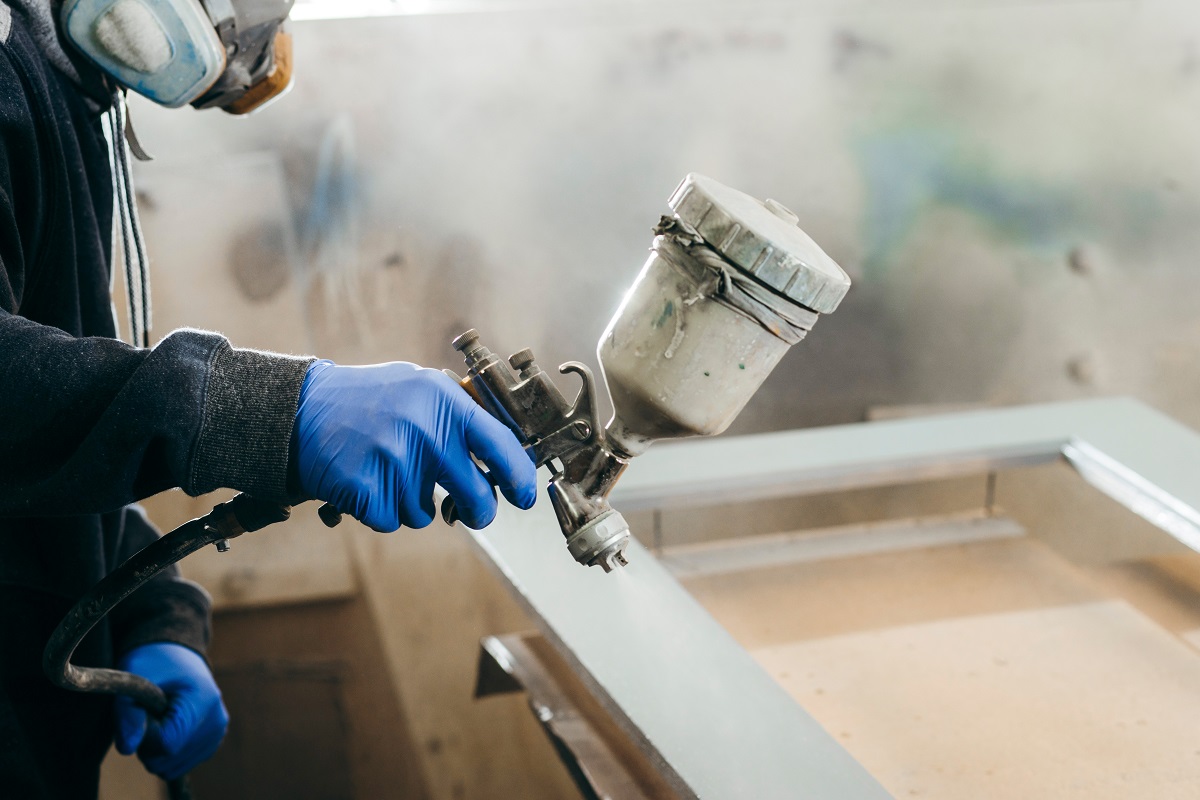
An EHS Hero ® subscriber is having trouble persuading painters to use eye protection during spray painting operations, who claim that the PPE gets in the way of the task. This led the subscriber to ask our experts: Is eye protection a compliance requirement for spray painting? See what they had to say on the matter.

Q: We have painters that do not use eye protection when doing certain base coatings. They claim that safety glasses, full face masks, and anything else that is known as a safety barrier, create a glare from the light and make the job impossible to do. Is eye protection required for spray painting operations? What standard says this so I have some written proof?
A: Though OSHA’s standard for spray finishing using flammable and combustible materials, found in 29 CFR 1910.107, does not specify the types of PPE required for spray painting operations, the agency’s eye and face protection standard found at 29 CFR 1910.133 requires all employers to ensure that employees use appropriate eye or face protection when exposed to eye or face hazards from flying particles, molten metal, liquid chemicals, acids or caustic liquids, chemical gases or vapors, or potentially injurious light radiation.
Additionally, pursuant to its general personal protective equipment standard at 29 CFR 1910.132, OSHA requires that employers provide appropriate PPE and training to each employee who is or likely will be exposed to physical or health hazards in the workplace when engineering and administrative controls cannot feasibly or effectively reduce exposures to safe levels. To determine whether a certain type of PPE is necessary for a given task, an employer must conduct a hazard assessment for each job to evaluate the levels of employee exposure to various hazards. OSHA provides nonmandatory compliance guidelines for hazard assessment and PPE selection in Appendix B to Subpart I of Part 1910, but ultimately it is up to the employer to assess workplace hazards and select, and have each affected employee use, the appropriate types of PPE. As OSHA states in Appendix B, “It should be the responsibility of the safety officer to exercise common sense and appropriate expertise to accomplish these tasks.”
Consequently, it is up to you as the employer to determine whether eye protection is necessary for your spray-painting operations, but given the chemical and particle hazards present, the use of such PPE should likely be required. In most spray painting operations, commonly used types of PPE include goggles or safety glasses, respirators, coveralls, and chemical-resistant gloves, but again the particular PPE required in your workplace will depend on the hazards and unique conditions present.
We also recommend that you consult the safety data sheets (SDSs) for any products being used in your spray-painting operations. Section 8 of the SDS is titled “Exposure Control and Personal Protection” and will provide recommendations on the types of PPE, including eye protection, to use to limit hazard exposure from the specific products in use.
Finally, you may also want to consult National Fire Protection Association (NFPA) 33 Standard for Spray Application Using Flammable or Combustible Materials for its recommendations.
| Ask the Expert is a service provided to subscribers of BLR ® ’s EHS Hero product, where experts are ready with answers to your organization’s unique questions surrounding EHS compliance. To learn more and request a trial of EHS Hero, click here. |